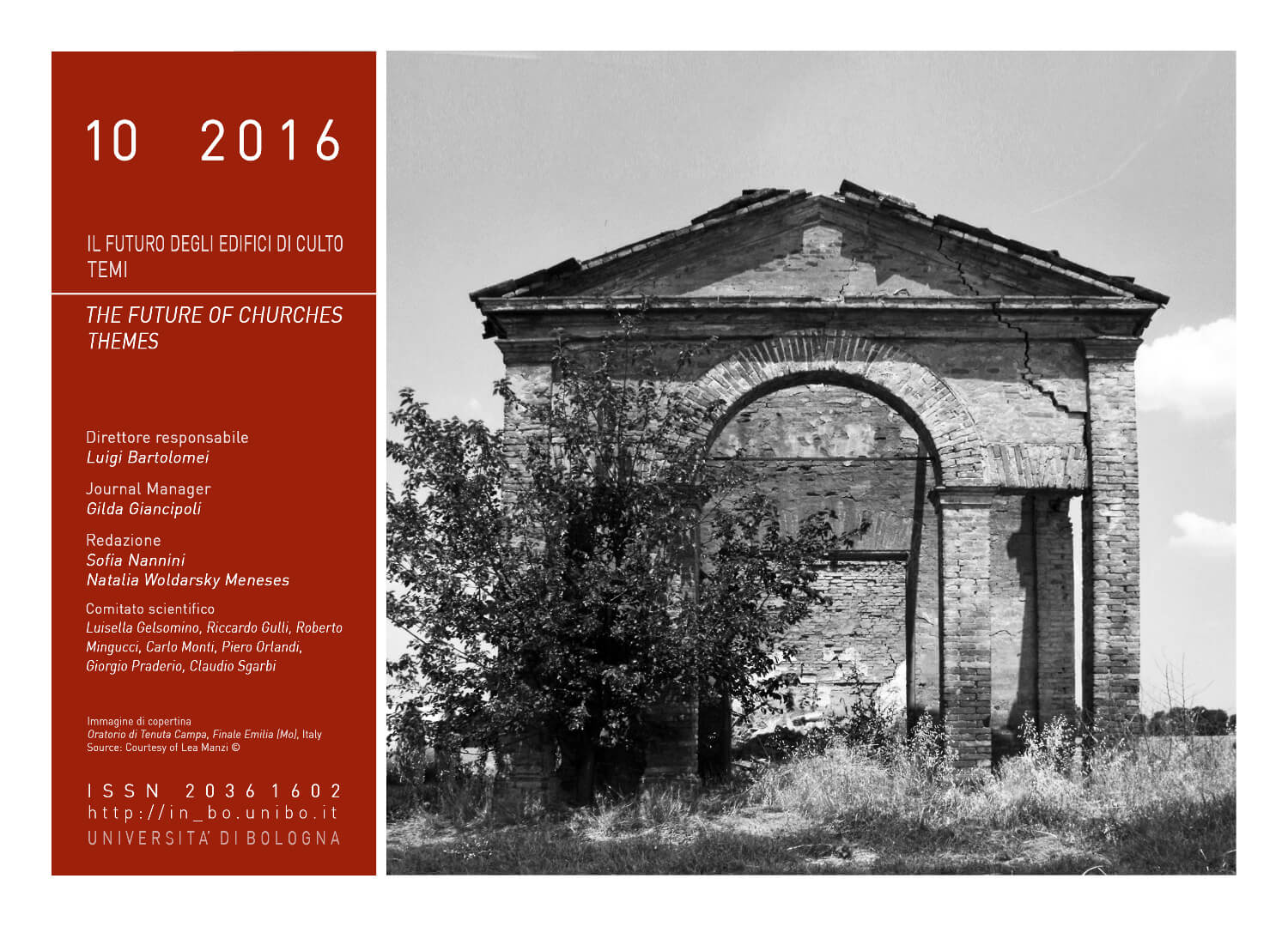The contemporary role of historical churches, between appropriation, heritagization and abandonment processes
DOI:
https://doi.org/10.6092/issn.2036-1602/7185Keywords:
Religious heritage, History of christian architecture, Architecture and liturgy, Processes of heritagization, Protection of cultural heritageAbstract
Christian churches are the subject of continuous updating and adaptation processes, which only cease when communities are moving or disappearing. The study of abandoned, redundant and under-utilized ecclesiastical complexes therefore requires a historical analysis of extensive chronological arches, with specific attention to institutional dynamics and cultural values underlying the dynamics of capitalization. The contribution - after highlighting some specificities of the Church’s architectural agency and the formation of its cultural heritage (matter / action, transformation / conservation, use / memory, construction / reuse) - proposes four reflections of historiographical nature relating to the plurality of Ecclesial subjects active on the territory, the relationship between community life and institutional protection, the building of public opinion and the participation of communities.Downloads
Published
2017-07-31
How to Cite
Longhi, A. (2016). The contemporary role of historical churches, between appropriation, heritagization and abandonment processes. IN_BO. Ricerche E Progetti Per Il Territorio, La Città E l’architettura, 7(10), 30–43. https://doi.org/10.6092/issn.2036-1602/7185
Issue
Section
Architecture and research
License
Copyright (c) 2017 Andrea Longhi
Copyrights and publishing rights of all the texts on this journal belong to the respective authors without restrictions.
This journal is licensed under a Creative Commons Attribution-NonCommercial 4.0 International License (full legal code).
See also our Open Access Policy.
Metadata
All the metadata of the published material is released in the public domain and may be used by anyone free of charge. This includes references.
Metadata — including references — may be re-used in any medium without prior permission for both not-for-profit and for-profit purposes. We kindly ask users to provide a link to the original metadata record.







